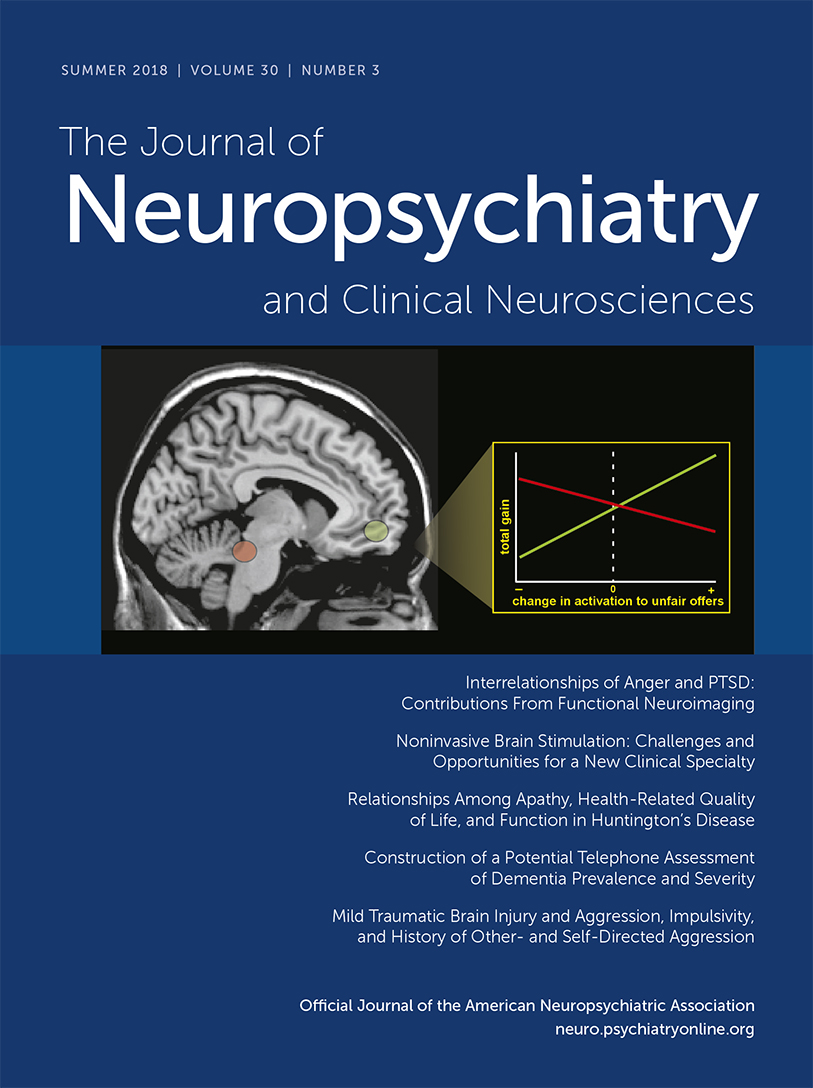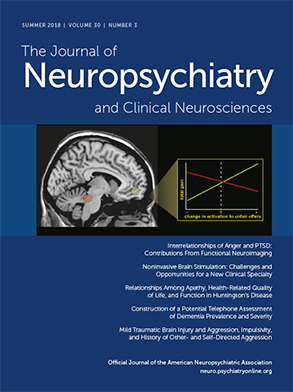Transcranial magnetic stimulation (TMS) offers a meaningful treatment option for patients with medication-refractory major depressive disorder.
1–3 The Food and Drug Administration has approved four distinct TMS devices for treatment-resistant depression: the NeuroStar TMS Therapy System (Neuronetics, Malvern, Pa., 2008),
4 the Deep TMS H-Coil System (Brainsway, Jerusalem, 2013),
5 the Magstim Rapid
2 Therapy System (Magstim Company, Morrisville, N.C., 2015),
6 and the Magvita TMS Therapy device (MagVenture, Alpharetta, Ga., 2015).
7 The first three devices have been in use in recent years as clinical treatment options at the Berenson Allen Center for Noninvasive Brain Stimulation at Beth Israel Deaconess Medical Center (Boston).
Across devices, the underlying principles of noninvasive brain stimulation are broadly overlapping. However, each machine utilizes a unique approach to achieve preferential stimulation over the dorsolateral prefrontal cortex. While the Magstim
6 and Magvita
8 devices both feature what is known as a “figure of 8” coil,” the NeuroStar
4 machine uses a proprietary variation on this design, with some differences in shape and function. The Brainsway Deep TMS H-Coil
5 device features yet another variation, utilizing an H-coil that incorporates multiple coil loops for synergistic magnetic field creation.
Little is known about how these devices compare with regard to patient and technician experience. The aim of this study was to obtain quantitative data regarding these experiences with each distinct device. We hypothesized that while no device has a demonstrated advantage in efficacy, there would be notable differences in perception of tolerability and usability across several domains of interest.
Results
Patient Experience
Among the 62 patients who received treatment with either the Magstim (N=31) or the NeuroStar (N=31) device, 38 (61%) were female and 24 (39%) were male. All patients completed their treatment course. Forty-four patients (71%) received a 10-Hz left-sided treatment protocol, 11 (18%) received a 20-Hz left-sided protocol, and seven (11%) received a 1-Hz right-sided protocol. The portion of patients receiving 1-Hz, 10-Hz, and 20-Hz protocols on each device was approximately equal with no significant differences. Any patient receiving treatment with the Deep TMS H-Coil System (not included in the analyses) was treated with the standard 18-Hz protocol for this device.
The Magstim and NeuroStar groups did not differ significantly with regard to clinical outcome, with an overall clinical response rate of 48% as defined by a 50% pre-to-post decrease in scores on the Beck Depression Inventory-II and 22.5% full remission rates.
However, patients treated with the NeuroStar device reported having greater confidence that the treatment was being performed correctly compared with those treated with the Magstim device (p<0.05). Conversely, with regard to tolerability, patients treated with the Magstim device reported less pain in the last week (p<0.05) and less pain on average (p<0.05) compared with those treated with the NeuroStar device. Magstim patients also reported feeling more tired on average than their NeuroStar counterparts, although this difference fell short of statistical significance (p=0.063). Cohen’s d was calculated to be 0.40, indicating a medium effect size for this finding.
Among the different protocols, the patients assigned to the 20-Hz protocol reported significantly more anxiety (ANOVA, p<0.05) and endorsed feeling less safe (ANOVA, p<0.05) compared with those assigned to the 1-Hz and 10-Hz protocols.
Technician Experience
Due to the timing of its acquisition, the Berenson Allen Center utilized the Deep TMS H-Coil System device for fewer than 500 sessions versus the >2,500 sessions performed with both the Magstim and NeuroStar devices during the pertinent period of data generation.
On average, over the incongruent sample, the technicians reported feeling that both the Magstim and NeuroStar devices were significantly easier to use than the Deep TMS H-Coil System device (p<0.001). Additionally, they found the former two devices to be more reliable (p<0.001) and better tolerated (p<0.001). Furthermore, the technicians reported greater confidence in using the Magstim and NeuroStar devices than the Deep H-Coil System TMS device (p<0.01) and that they would be more likely to recommend the two former devices to other treatment centers (p<0.001).
Technicians’ reported no significant differences between the Magstim and NeuroStar devices in the aforementioned areas (
Table 2).
Discussion
To our knowledge, this study provides the first evidence-based investigation of patient and technician attitudes toward distinct TMS devices used in the treatment of depression. Each device utilizes distinct approaches to clinical applications of TMS, and each device manufacturer has approached the clinical market in distinct ways. Therefore, it is valuable for the field to better understand patient and technician experiences as they relate to various devices. Our analysis was uncorrected for multiple comparisons and, as such, should be considered exploratory.
While there were notable areas of overlap and functional equivalence, including overall efficacy between at least two of the devices, there were also respective strengths and weaknesses across devices. One meaningful finding was that patients who received treatment using the NeuroStar machine were more confident that the treatment was performed correctly, despite technicians reporting no differences between confidence using the NeuroStar device and the Magstim device. The NeuroStar device notably features a proprietary medical chair and functional headrest that are necessary components of the treatment, while the Magstim features more versatility and is capable of being used as a hand-held device or with any number of company-endorsed accessories (e.g., chair, coil stand). It is difficult to assess whether this finding of greater patient confidence in the NeuroStar device relates to its appearance, its functionality, or actual technician skill, but the resulting perception is nevertheless experienced by patients in a manner that may in fact enhance their clinical experience.
In contrast, with regard to tolerability, patients treated with the Magstim device reported less pain than their counterparts treated with the NeuroStar device. It is worth speculating about a plausible connection between this finding and the previously discussed increased patient confidence in the NeuroStar device, since it is possible that patients’ perception of pain with the NeuroStar device in some way contributed to their confidence that the device was working. Notably, however, none of these perceptions seemingly affected the likelihood of choosing the same device again, since there were no differences between groups on that item.
The data also shed some light on patient experience with distinct frequency protocols used in the treatment of depression. Though no longer a first-line approach for most patients, the 20-Hz protocol has been used extensively in the past at our center and elsewhere and seems to be associated with negative patient experiences of increased anxiety and feelings of being unsafe during the treatment. We did not obtain qualitative data that could illuminate why patients felt this way, and it is worth noting the many factors that might be different between the groups analyzed (including depression duration). However, one could speculate that the intensity of the sound or more rapidly repetitive sensations of discomfort, even in a shorter protocol, may have played a role.
The Brainsway Deep TMS H-Coil System
5 device is perhaps the most distinctive as a result of its H-coil design. However, due to the low number of patients enrolled during the inclusion period, the available results could not be used in the patient attitudes analysis. We were able to analyze technician attitudes toward this device because of a 100% response rate among our technicians over the last several years, but these data should be observed with caution because clinical use of this device was highly limited compared with that of the other two devices analyzed. Acknowledging this limitation, our technicians consistently found the Brainsway Deep TMS H-Coil device wanting in the areas of ease of use, tolerability, and reliability efficacy, as well as in terms of likelihood to recommend use of the device to other providers. However, we feel that it would be premature to make meaningful conclusions about these findings because the data obtained featured a sample from only one clinical research center where device familiarity and the center’s academic and research culture may have skewed the results.
We provided the survey to the director of another local TMS center (McLean Hospital, Belmont, Mass.), where the Brainsway Deep TMS H-Coil device has been used extensively alongside the NeuroStar device. No differences in staff experiences were reported, adding validity to the concern that experience with a particular device is highly influential in determining attitudes toward it. Pending greater data collection and expansion to other centers, we recommend that the results be reviewed cautiously.
Other limitations of this study include 1) that it was entirely retrospective in nature and featured small numbers of respondents in both the Brainsway Deep TMS H-Coil device group and the 1-Hz and 20-Hz protocols, respectively, and 2) the amount of time between treatments and survey administration, which varied and was as long as 3 years for some participants.
Although they share similarities, the TMS devices used to treat medication-refractory depression are distinct and confer different patient and technician experiences. TMS providers must take into consideration the existing evidence about device-specific qualities when making decisions about which treatment to offer patients. Furthermore, as increasing numbers of devices and protocols gain popularity, it is important for the field to monitor these parameters in order to optimally match patients with appropriate and individualized treatment.

